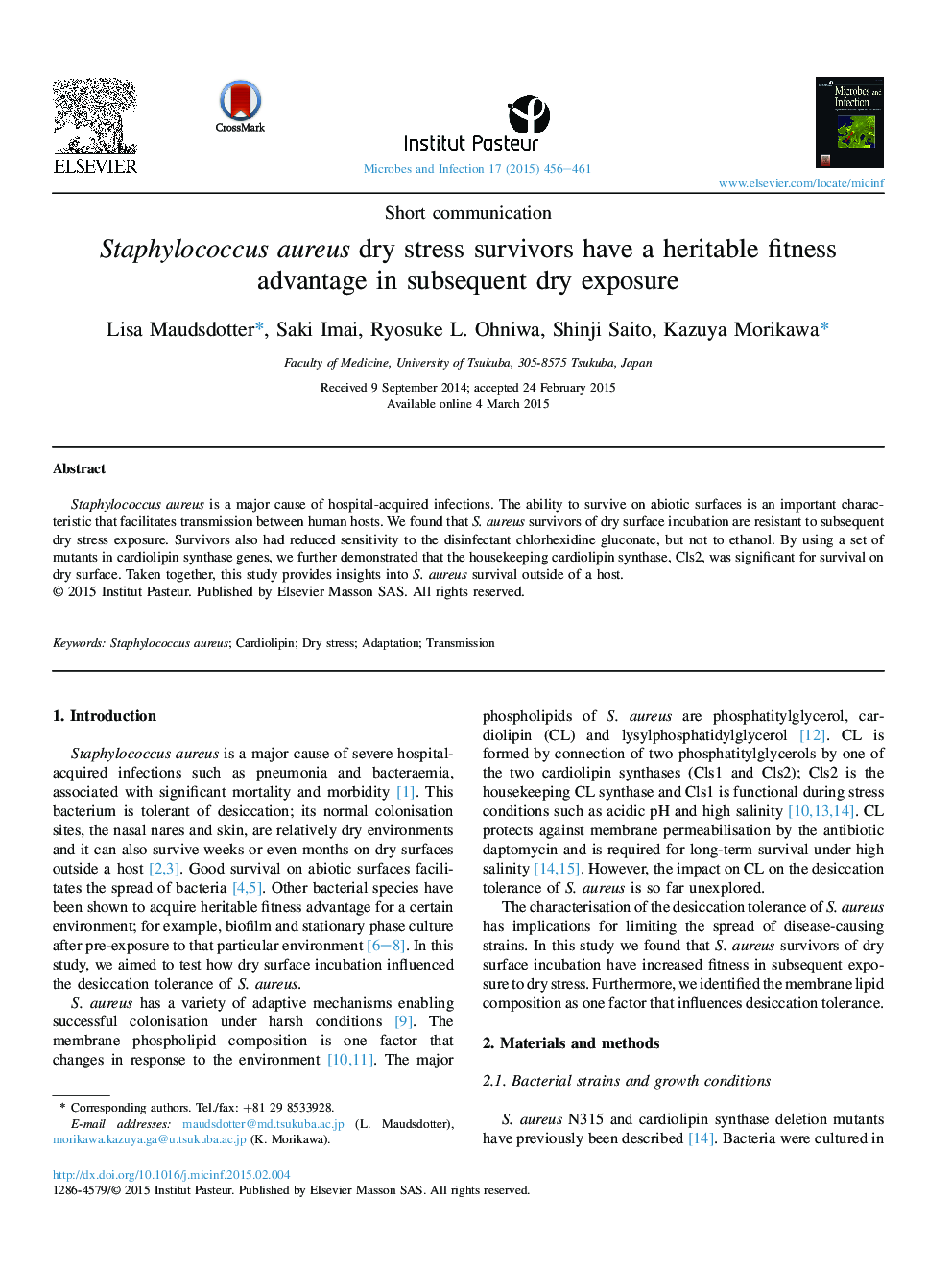| Article ID | Journal | Published Year | Pages | File Type |
|---|---|---|---|---|
| 6135663 | Microbes and Infection | 2015 | 6 Pages |
Abstract
Staphylococcus aureus is a major cause of hospital-acquired infections. The ability to survive on abiotic surfaces is an important characteristic that facilitates transmission between human hosts. We found that S. aureus survivors of dry surface incubation are resistant to subsequent dry stress exposure. Survivors also had reduced sensitivity to the disinfectant chlorhexidine gluconate, but not to ethanol. By using a set of mutants in cardiolipin synthase genes, we further demonstrated that the housekeeping cardiolipin synthase, Cls2, was significant for survival on dry surface. Taken together, this study provides insights into S. aureus survival outside of a host.
Related Topics
Life Sciences
Immunology and Microbiology
Immunology
Authors
Lisa Maudsdotter, Saki Imai, Ryosuke L. Ohniwa, Shinji Saito, Kazuya Morikawa,
